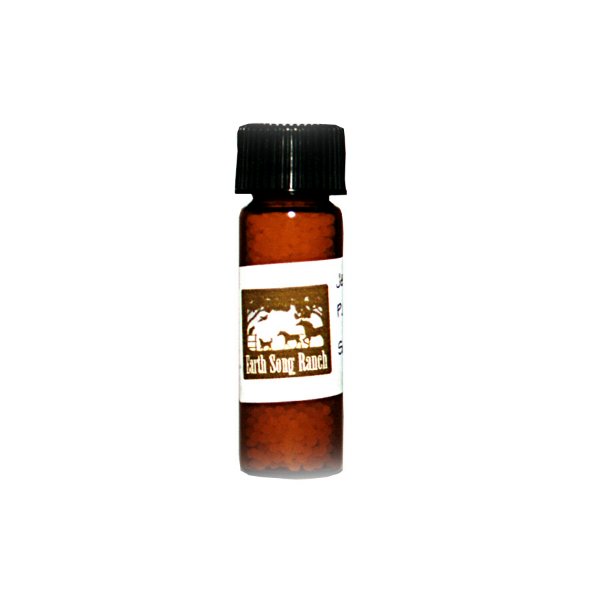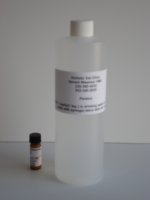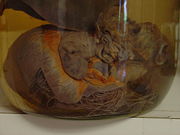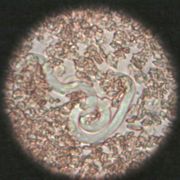
Horse, Dog, Cat, Nosodes
Equine Solutions Catalog Page 22a

NOSODES - by
(The Holistic Vet Clinic)
![]()
Herbal Wormer & Eye Health Support Herbs (Uveitis/Glaucoma)
Equine Equine-Zyme, Dog and Cat Equine-Zyme, Beta Glucan, Joint-Zyme, MSM, Glucosamine,
Mare, Foal, Stallion, Senior Zyme, Yeasture for non-equine livestock,
Cushings, EPM, Hoof Builder, Tummy-Zymes
Pure Herbs and Herb Blends
Nosodes
![]()
Nosodes are Homeopathic Immunizations that are given in tiny sugar pill form,
monthly, that have no side effects, and are very effective in disease prevention.
all are 30C strength
See article below.

HORSES
1 dram bottles will last up to 5 horses 1 yr. 2 dram will last up to 10 horses 1. yr.
You can administer the little sugar pills between their lip and gums or you
can make a spray to spray on the gums. To build up the immune system,
Start out 1 time for 3 days in a row,
then 1 time per week for a month and then 1 time a month from there on to
maintain constant built up immune system.
If your horse, dog or cat already has an illness, we have homeopathic
protocols for them. Just email me to inquire: orders@myfineequine.com
CATS
1 dram up to 10 cats 1 yr. $25, 2 dram up to 20 cats 1 yr. $45
DOGS
1 dram up to 5 dogs 1 yr $25., 2 dram up to 10 dogs 1 yr. $45
Horses
1 dram up to 5 horses 1 year $25, 2 dram size $45
------------------------------------------------
Horses, Dogs and Cats Heartworm Homeopathic Kit
 Heartworm Kit $79.95
Heartworm Kit $79.95

The Dangers of Heartworm
Drs. Foster & Smith Educational Staff
Heartworms are transmitted by mosquitoes that have bitten heartworm-infected animals.
Heartworms spend their adult life in the right side of the heart and the large blood
vessels connecting the heart to the lungs.
What are the DANGERS of heartworm infection?
The adult heartworms can obstruct the different chambers of the heart and the various
large blood vessels leading from the heart to the lungs. First, the right pumping chamber
(right ventricle) of the heart and the large pulmonary artery leading from it to the lungs
become enlarged as the worms take up space. If worms die, they may follow the flow of blood
into smaller vessels in the lung and obstruct those vessels, causing pulmonary embolisms.
In severe infections, the worms can also block the large vein (vena cava) bringing blood
to the right side of the heart. As the blood backs up, the liver becomes enlarged and damaged.
What are the SIGNS of heartworm infection?
Dogs with heartworm infections may show no signs at all, or they may have decreased appetite,
loss of weight, and listlessness. Often, the first sign of the disease is a cough. Animals
ith heartworm disease will start to show lack of endurance during exercise. In severe cases,
they may accumulate fluid in their abdomen (ascites) that makes them look pot-bellied.
In rare situations in which animals have many adult worms, the animals may die of sudden heart failure.
Heartworms are found in:
Dogs, Cats, Ferrets, Horses, Wild Animals (Bear, Fox)Can humans be infected with heartworms?
Yes, there have been instances of heartworm infection in people. Instead of migrating to
the heart, the larvae migrate to the lungs in humans. There the larvae can block vessels
causing an infarction. At the site of the infarction, a nodule develops which can be seen
on radiographs (x-rays). Usually, the person has few, if any signs of infection. Surgical
removal of the nodule is sometimes necessary.
Did You Know?
Thousands of dogs die each year from complications relating to heartworm disease.
Heartworm is a disease that every dog can contract.
One bite from an infected mosquito is all it takes for your pet to become infected with heartworm.
Heartworm is almost 100% preventable.
Products to PREVENT heartworm in your dog...
Commonly used heartworm preventives for dogs include Heartgard Plus and Tri-Heart Plus.
http://www.drsfostersmith.com/pic/article.cfm?aid=914&c=9547&

Heartworm
From Wikipedia, the free encyclopedia
Jump to: navigation, search
For the album by Whipping Boy, see Heartworm (album).
Heartworm is a parasitic roundworm (Dirofilaria immitis) that is spread from host to host through the bites of
mosquitoes. The heartworm is a type of filaria, a small thread-like worm. The definitive host is the dog but it
can also infect cats, wolves, coyotes, foxes and other animals, such as ferrets, sea lions and even humans. The
parasite is commonly called "heartworm" because the adult reproductive stage of its life cycle resides
primarily in the pulmonary artery of its host where it can live for many years. Heartworm infection may result
in serious disease for the host; infected dogs that are untreated may die and treatment also has risks. The best
defense against heartworm disease is the use of prophylactic treatment given monthly.
 Canine heart infected with heartworm
Canine heart infected with heartworm  Microfilaria (as seen at 400X magnification)
Microfilaria (as seen at 400X magnification)
Canine heart infected with heartwormContents [hide]
1 History of the disease
2 Distribution
3 Course of Infection
4 Clinical Signs of Infection
5 Role of Wolbachia
6 Diagnosis
7 Treatment
8 Prevention
9 Feline heartworm disease
9.1 Pathology
9.2 Signs and symptoms
9.3 Diagnosis
9.4 Treatment and prevention
10 Human health considerations
11 References
12 Resources and external links
12.1 Heartworm Society
12.2 Other resources
[edit] History of the disease
The first published evidence of disease in the dog in the United States was in The Western Journal of Medicine
and Surgery in 1847. Feline heartworm was first described in the 1920s.[1]
[edit] Distribution
Although at one time confined to the southern United States, heartworm has now spread to nearly all locations where
its vector, the mosquito, is found. Transmission of the parasite occurs in all of the United States (except Alaska)
and the warmer regions of Canada. The highest infection rates are found within 150 miles of the Atlantic coast
from Texas to New Jersey, and along the Mississippi River and its major tributaries.[2] It has also been found
in South America,[3] southern Europe,[4] Southeast Asia,[5] the Middle East,[6] Australia, and Japan.[2]
[edit] Course of Infection
Microfilaria (as seen at 400X magnification)Heartworms go through several life stages before they become adults
infecting the heart of the host animal. The worms require the mosquito as an intermediate stage in order to complete
their life cycle. The period between the initial infection when the dog is bitten by a mosquito and the maturation
of the worms into adults living in the heart takes 6.5 to 7 months in dogs and is known as the prepatent period.
Heartworms bear live young, known as microfilariae, producing thousands of them every day. The microfilariae circulate
in the bloodstream for as long as two years, waiting for the next stage in their life cycle in the gut of a bloodsucking
mosquito. When ingested by a mosquito, the microfilariae undergo a series of molts to the infective, or third,
larval stage and then migrate to the salivary glands of the mosquito, where they wait to infect another host. These
changes can occur in as little as two weeks and as long as six weeks, depending on the warmth of the climate, and
generally cease entirely at ambient temperatures below 14° Celsius (57° Fahrenheit).
After infection, the third stage larval heartworms (L3) deposited by the mosquito grow for a week or two and molt
to the fourth larval stage (L4) under the skin at the site of the mosquito bite. Then they migrate to the muscles
of the chest and abdomen and 45 to 60 days after infection, molt to the fifth stage (L5, immature adult). Between
75 and 120 days after infection these immature heartworms then enter the bloodstream and are carried through the
heart to reside in the pulmonary artery. Over the next 3 to 4 months they increase greatly in size. The female
adult worms are about 30 cm in length, and males are about 23 cm with a coiled tail.[7] By approximately 6.5 to
7 months after infection the adult worms have mated and the females begin producing microfilariae.
[edit] Clinical Signs of Infection
Dogs show no indication of heartworm infection during the 6 month long prepatent period prior to the worms' maturation,
and current diagnostic tests for the presence of microfilariae or antigens cannot detect prepatent infections.
Rarely, migrating heartworm larvae get "lost" and end up in unusual sites such as the eye, brain, or
an artery in the leg, which results in unusual symptoms such as blindness, seizures and lameness.
Many dogs will show little or no sign of infection even after the heartworms have matured. These animals usually
have a light infection and live a fairly sedentary lifestyle. However, active dogs and those with heavier infections
may show the classic signs of heartworm disease. Early signs include a cough, especially on exercise and early
exhaustion upon exercise. More advanced cases progress to severe weight loss, fainting, coughing up blood and,
finally, congestive heart failure.
[edit] Role of Wolbachia
Wolbachia is an intracellular bacteria that is an endosymbiont of Dirofilari immitis. An endosymbiont is an organism
that lives within the cells of another organism, often giving an advantage to both. It is thought that all heartworms
are infected with Wolbachia to some degree. Research indicates that the inflammation that occurs at the die-off
of adult heartworms or larvae is in part due to the release of Wolbachia bacteria into the tissues. This may be
particularly significant in cats, in which disease seems to be more related to larval death than living adult heartworms
(see below). Pretreating heartworm positive animals with an antibiotic such as doxycycline to remove Wolbachia
may prove to be beneficial, but further studies are necessary.[8]
[edit] Diagnosis
A blood test to detect the antigens released from the female reproductive tract is the most common method of diagnosis.
The specificity of these tests is close to 100 percent and the sensitivity is more than 90%.[9] False negative
tests can result from low worm counts, immature infections and all male infections. Heartworm positive dogs should
also be tested for the presence of microfilariae, usually using a concentrating filter test. X-rays are used to
evaluate the amount of lung damage caused by the presence of heartworms.
[edit] Treatment
If an animal is diagnosed with heartworms, treatment may be indicated. Before the worms can be treated, however,
the dog must be evaluated for heart, liver, and kidney function to evaluate the risks of treatment. Usually the
adult worms are killed with an arsenic-based compound. The currently approved drug in the US, melarsomine dihydrochloride,
is marketed under the brand name Immiticide. [10] It has a greater efficacy and fewer side effects than previously
used drug (thiacetarsamide sodium, sold as Caparsolate) which makes it a safer alternative for dogs with late-stage
infections.
After treatment, the dog must rest (restricted exercise) for several weeks so as to give its body sufficient time
to absorb the dead worms without ill effect. Otherwise, when the dog is under exertion, dead worms may break loose
and travel to the lungs, potentially causing respiratory failure and death. According to the American Heartworm
Society, use of aspirin in dogs infected with heartworms is no longer recommended due to a lack of evidence of
clinical benefit and may be contraindicated. It had previously been recommended for its effects on platelet adhesion
and reduction of vascular damage caused by the heartworms.
The course of treatment is not completed until several weeks later when the microfilariae are dealt with in a separate
course of treatment. Once heartworm tests are negative, the treatment is considered a success.
Surgical removal of the adult heartworms is also a treatment that may be indicated, especially in advanced cases
with substantial heart involvement. [11]
Long term monthly administration of ivermectin (but apparently not moxidectin, milbemycin or selamectin) year round
for at least three years at the dose normally used for heartworm prevention (see "Prevention") may kill
adult heartworms. However, this is not the treatment of choice for removal of adult heartworms for two reasons.
First, this treatment is not as effective at melarsamine. More importantly, adult heartworms do not begin to die
until some 18 months of treatment have elapsed, which is not acceptable under most circumstances.
From time to time various "homeopathic," "natural" or "organic" products are touted
as cures or preventives for heartworm disease. However, such products have never been proven effective by rigorous
scientific methods, and the claims should be viewed with skepticism.
[edit] Prevention
This section does not cite any references or sources. (May 2008)
Please help improve this section by adding citations to reliable sources. Unverifiable material may be challenged
and removed.
Prevention of heartworm infection can be obtained through a number of veterinary
drugs. The drugs approved for use in the US are ivermectin (sold under the
brand name Heartgard and several other generic versions), milbemycin (Interceptor and Sentinel) and moxidectin
(ProHeart) administered as pills or chewable tablets. These drugs are given monthly during the local mosquito season.
Moxidectin is also available in both a 6-month and 12-month sustained release injection, ProHeart 6, ProHeart 12,
administered by veterinarians. The injectable form of moxidectin was taken off the market in the United States
due to safety concerns. ProHeart 6 remains on the market in many other countries including Canada and Japan. Its
sister product, ProHeart 12 is used extensively in Australia and Asia as a 12-month injectable preventive. Topical
treatments are available as well. Advantage Multi (imidacloprid + moxidectin) Topical Solution, which utilizes
moxidectin for control and prevention of roundworms, hookworms, heartworms, whipworms, as well as imidocloprid
to kill adult fleas. Selamectin ([[Revolution]]), is a topical preventive that is likewise administered monthly
and also controls fleas, ticks, and mites.
Preventive drugs are highly effective and when regularly administered will protect more than 99 percent of dogs
and cats from infection. Most failures of protection result from irregular and infrequent administration of the
drug. However, the monthly preventives all have a reasonable margin for error in their administration such that
if a single month's dose is accidentally missed, adequate protection is usually provided so long as the next two
monthly doses are administered on schedule.
Heartworm prevention for cats is available as ivermectin (Heartgard for Cats), milbemycin (Interceptor), or the topical selamectin (Revolution for Cats).
Monthly heartworm prevention should be administered beginning within a month of the onset of the local mosquito
season and continued for a month after the cessation of local mosquito activity. In warm climates, such as the
warm temperate climate along the immediate Gulf Coast of the United States and in tropical and subtropical regions,
heartworm prevention must be administered year round. Some authorities recommend year round administration even
in colder climates on the theory that mosquito activity may occur during the occasional unseasonable warm spell.
However the parasite requires a specific number heating degree days to develop in the mosquito and transmission
by "winter" mosquitoes has never been demonstrated.
[edit] Feline heartworm disease
While dogs are a natural host for D. immitis, cats are an atypical host. Because of this, there are significant
differences between canine and feline heartworm disease. The majority of heartworm larvae do not survive in cats,
so unlike in dogs, a typical infection in a cat is 2 to 5 worms. The life span of heartworms is considerably shorter
in cats, only two to three years, and most infections in cats do not have circulating microfilariae. Cats are also
more likely to have aberrant migration of heartworm larvae, resulting in infections in the brain or body cavities.[12]
The infection rate in cats is 1 to 5 percent of that in dogs in endemic areas.[13] Both indoor and outdoor cats are infected. The mosquito vector is known to enter homes.
[14]
[edit] Pathology
The vascular disease in cats that occurs when the L5 larvae invade the pulmonary arteries is more severe than in
dogs. A syndrome related to this inflammatory reaction has been identified in cats: heartworm-associated respiratory
disease (HARD). HARD can occur 3 to 4 months after the initial infection and is caused by the presence of the L5
larvae in the vessels. The subsequent inflammation of the pulmonary vasculature and lungs can be easily misdiagnosed
as feline asthma or allergic bronchitis.[15]
Obstruction of pulmonary arteries due to emboli from dying worms is more likely to be fatal in cats than dogs because
of less collateral circulation and fewer vessels.[16]
[edit] Signs and symptoms
Acute heartworm disease in cats can result in shock, vomiting, diarrhea, fainting, and sudden death. Chronic infection
can cause loss of appetite, weight loss, lethargy, exercise intolerance, coughing, and difficulty breathing. The
signs of HARD can persist even after complete elimination of the heartworm infection.[15]
[edit] Diagnosis
Diagnosis of heartworm infection in cats is problematic. Like in dogs, a positive ELISA test for heartworm antigen
is a very strong indication of infection. However, the likelihood of a positive antigen test depends on the number
of adult female worms present. If there are only male worms, the test will be negative. Even when there are female
worms, an antigen test will usually only become positive seven to eight months post-infection. Therefore, a cat
may have significant clinical signs long before the development of a positive test. HARD can be found in cats that
never develop adult heartworms and therefore never have a positive antigen test.
An antibody test is also available for feline heartworm infection. It will be positive in the event of exposure
to D. immitis, so a cat that has successfully eliminated an infection may still be positive for up to 3 months.
The antibody test is more sensitive than the antigen test but it does not provide direct evidence of adult infection.[17]
It can, however, be considered specific for diagnosing previous larval infections, and therefore fairly specific
for HARD.
X-rays of the chest of a heartworm infected cat may show an increased width of the pulmonary arteries and focal
or diffuse opacities in the lungs. Echocardiography is a fairly sensitive test in cats. Adult heartworms appear
as double-lined hyperechoic structures within the heart or pulmonary arteries.[18]
[edit] Treatment and prevention
Arsenic compounds have been used for heartworm adulticide treatment in cats as well as dogs but seem more likely
to cause pulmonary reactions. A significant number of cats develop pulmonary embolisms a few days after treatment.
The effects of melarsomine are poorly studied in cats. Due to a lack of studies showing a clear benefit of treatment
and the short lifespan of heartworms in cats, adulticide therapy is not recommended and there are no drugs approved
in the US for use in cats.[16]
Treatment typically consists of putting the cat on a monthly heartworm preventive and a short term corticosteroid.[12]
Surgery has also been used successfully to remove adult worms. Three drugs are approved for use in cats in the
US: ivermectin, milbemycin, and selamectin. The prognosis for feline heartworm disease is guarded.
[edit] Human health considerations
The dog heartworm is of negligible public health risk, because it is unusual for humans to become infected. Additionally,
human infections usually are of little or no consequence, although rarely an infected human may show signs of respiratory
disease. In most cases, however, the heartworm dies shortly after arriving in the human lung, and a nodule, known
as a granuloma, forms around the dead worm as it is being killed and absorbed. If an infected person happens to
have a chest X-ray at that time, the granuloma may resemble lung cancer on the X-ray and require a biopsy to rule
out the life-threatening condition. This may well be the most significant medical consequence of human infection
by the dog heartworm.
At one time it was thought that the dog heartworm infected the human eye, with most cases reported from the southeastern
United States. However, these cases are now thought to be caused by a closely-related parasite of raccoons, Dirofilaria
tenuis. Several hundred cases of subcutaneous (under the skin) infections in humans have been reported in Europe,
but these are almost always caused by another closely-related parasite, Dirofilaria repens, rather than the dog
heartworm.
[edit] References
^ General Heartworm Disease Information. American Heartworm Society. Retrieved on 2007-02-26.
^ a b Ettinger, Stephen J.;Feldman, Edward C. (1995). Textbook of Veterinary Internal Medicine, 4th ed., W.B. Saunders
Company. ISBN 0-7216-6795-3.
^ Vezzani D, Carbajo A (2006). "Spatial and temporal transmission risk of Dirofilaria immitis in Argentina".
Int J Parasitol 36 (14): 146372. doi:10.1016/j.ijpara.2006.08.012. PMID 17027990.
^ Heartworm Disease: Introduction. The Merck Veterinary Manual (2006). Retrieved on 2007-02-26.
^ Nithiuthai, Suwannee (2003). Risk of Canine Heartworm Infection in Thailand. Proceedings of the 28th World Congress
of the World Small Animal Veterinary Association. Retrieved on 2007-02-26.
^ Rafiee, Mashhady (2005). Study of Prevalence of Dirofilaria immitis Infestation in Dogs were Examined in Veterinary
Clinics of Tabriz Azad University (Iran) during 19922002. Proceedings of the 30th World Congress of the World
Small Animal Veterinary Association. Retrieved on 2007-02-26.
^ Johnstone, Colin (1998). Heartworm. Parasites and Parasitic Diseases of Domestic Animals. University of Pennsylvania.
Retrieved on 2007-02-26.
^ Todd-Jenkins, Karen (October 2007). "The Role of Wolbachia in heartworm disease". Veterinary Forum
24 (10): 2830. Veterinary Learning Systems.
^ Atkins, Clarke (2005). Heartworm Disease in Dogs: An Update. Proceedings of the 30th World Congress of the World
Small Animal Veterinary Association. Retrieved on 2007-02-26.
^ Product Information. Retrieved on 2008-07-01.
^ [http://www.heartwormsociety.org/article.asp?id=48 2005 Guidelines For the Diagnosis, Prevention and Management
of Heartworm (Dirofilaria immitis) Infection in Dogs]. American Heartworm Society (2005). Retrieved on 2008-07-01.
^ a b 2007 Guidelines For the Diagnosis, Treatment and Prevention of Heartworm (Dirofilaria immitis) Infection
in Cats. American Heartworm Society (2007). Retrieved on 2007-07-26.
^ Berdoulay P, Levy JK, Snyder PS, et al (2004). "Comparison of serological tests for the detection of natural
heartworm infection in cats". Journal of the American Animal Hospital Association 40 (5): 37684. PMID 15347617.
^ Atkins CE, DeFrancesco TC, Coats JR, Sidley JA, Keene BW (2000). "Heartworm infection in cats: 50 cases
(19851997)". J. Am. Vet. Med. Assoc. 217 (3): 3558. PMID 10935039.
^ a b Yin, Sophia (June 2007). "Update on heartworm infection". Veterinary Forum 24 (6): 4243. Veterinary
Learning Systems.
^ a b Atkins, Clarke E., Litster, Annette L. (2005). "Heartworm Disease", in August, John R. (ed.): Consultations
in Feline Internal Medicine Vol. 5. Elsevier Saunders. ISBN 0-7216-0423-4.
^ Atkins C (1999). "The diagnosis of feline heartworm infection". Journal of the American Animal Hospital
Association 35 (3): 1857. PMID 10333254.
^ DeFrancesco TC, Atkins CE, Miller MW, Meurs KM, Keene BW (2001). "Use of echocardiography for the diagnosis
of heartworm disease in cats: 43 cases (19851997)". J. Am. Vet. Med. Assoc. 218 (1): 669. PMID 11149717.
[edit] Resources and external links
[edit] Heartworm Society
American Heartworm Society Founded in 1974, the American Heartworm Society is internationally recognized as the
definitive authority with respect to heartworm disease in dogs and cats.
American Heartworm Society information for pet owners:
What Is Heartworm?
Frequently Asked Questions
Heartworm Disease in Dogs
Heartworm Disease in Cats
American Heartworm Society information for veterinarians. (Every three years the American Heartworm Society holds
an international symposium. Following each triennial symposium, the Society updates its guidelines for veterinarians
to incorporate any new discoveries. The following guidelines are widely considered "best practices" and
should be closely followed by veterinarians in dealing with this parasite.)
Guidelines for the Diagnosis, Prevention and Management of Heartworm (Dirofilaria immitis) Infection in Dogs
Guidelines for the Diagnosis, Prevention and Management of Heartworm (Dirofilaria immitis) Infection in Cats
[edit] Other resources
Moxidectin Facts, Usage, and Safety Information
Feline Heartworm Disease (from Auburn University)
Heartworm Topics (from the University of Pennsylvania)
Mosquito-borne Dog Heartworm Disease (University of Florida Extension Bulletin)
What You Should Know About Heartworm Disease (from the American Veterinary Medical Association)
Case Study of Canine Heartworm Disease (from the University of California, Davis)
Case Study of Feline Heartworm Disease (from the University of California, Davis)
Case Study of Canine Heartworm Disease (from the University of California, Davis)
Heartworm Prevention Resources for Dog Owners (from Drs. Foster & Smith's Veterinary Staff)
[hide]v d eDomestic cat
Felinology History · Ancient Egypt · Anatomy
Genetics Coat genetics · Body genetics · Selective breeding
Health Diet · Vaccination · Feline viral rhinotracheitis · Feline calicivirus · Feline
panleukopenia · Feline leukemia virus · Feline immunodeficiency virus · Feline infectious
peritonitis · Rabies · Ringworm · Flea · Heartworm · Roundworm · Tick
· Toxoplasmosis · Feline acne · Cat skin disorders · Feline asthma · Feline
Hepatic Lipidosis · Feline lower urinary tract disease · Neutering · Declawing
Behavior Senses · Kneading · Righting reflex · Body language · Catfight · Communication
· Intelligence · Purr · Play and toys · Catnip
Human-cat
interaction Feral cat · Black cat · Cat show · Ship's cat · Highrise syndrome ·
Animal hoarding · Cat meat
Registries Cat Fanciers' Association · Fédération Internationale Féline · Governing
Council of the Cat Fancy · The International Cat Association
Breeds Abyssinian · American Curl · Balinese · British Shorthair · Bengal ·
Birman · Bombay · Burmese · Chartreux · Cornish Rex · Devon Rex · Don
Sphynx · Egyptian Mau · Exotic Shorthair · Himalayan · Japanese Bobtail · Javanese
· Korat · Maine Coon · Manx · Munchkin · Norwegian Forest Cat · Ocicat
· Oriental Shorthair · Persian · Peterbald · Ragdoll · Ragamuffin · Russian
Blue · Savannah · Scottish Fold · Siamese · Siberian · Singapura · Somali
· Sphynx · Tonkinese · Turkish Angora · Turkish Van
Category · Portal
Retrieved from "http://en.wikipedia.org/wiki/Heartworm"
Categories: Parasites | Dog diseases | Cat diseases | Veterinary helminthology
Hidden category: Articles needing additional references from May 2008

Use the Navigation Bars for quick and easy access.

You can contact us by Snail Mail at: